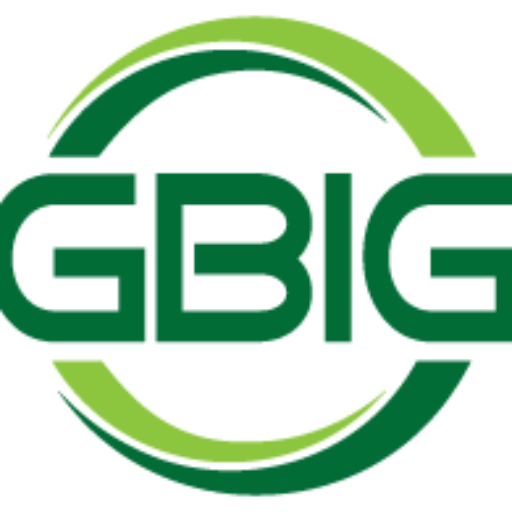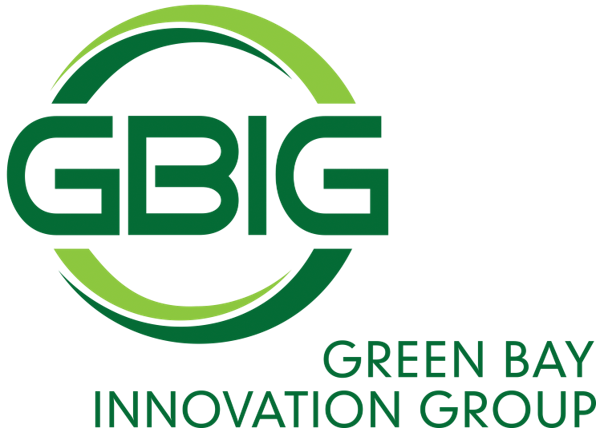
Read the March 8th, 2023 Green Bay Innovation Group Newsletter here.

Read the March 8th, 2023 Green Bay Innovation Group Newsletter here.
Women in the 5P presents the Women Leaders in Industry Series. Lisa Reynolds, CEO of Reynolds Packaging, will be the featured presenter in a webinar from 1-2pm Monday, April 24. Reynolds Packaging specializes in flexible packaging solutions and eco-friendly packaging. Reynold Packaging was named 2020 Wisconsin Woman-Owned Business of the Year by Marketplace Governor’s Awards.

NEW NORTH, February 13, 2023 – Kate Burgess, a dynamic leader within the creative space for more than two decades, has joined the board of directors of New North Inc., the regional economic development corporation for the 18 counties of Northeast Wisconsin. She was advanced by New North’s board development committee and approved by the Board.

“Kate is an inspirational leader who has a passion for bringing out diverse perspectives, leading to bold ideas and innovative concepts,” says Barb LaMue, president and CEO of New North Inc. “At the start of the pandemic, Kate’s team launched Keep on Wisconsin to cultivate connections in new ways, inspire communities to help their neighbors and to navigate through the unprecedented times. We are excited to add her deep community involvement, along with her business and inspirational leadership, to our Board.”
Burgess is CEO of Elevate97, a Green Bay-based brand house that creates, produces and distributes marketing solutions for worldwide brands. She co-founded the company as FulfillNet in 1997 and became its full-time CEO in 2004. The company transitioned to its current brand in 2014 and is 100-percent women-owned.

She began her professional career by working for more than a decade in sales & marketing and human resources positions, primarily in the food-production industry.
Burgess holds a bachelor’s degree in communication from Marquette University.
She is active in the Northeast Wisconsin community, serving on the board of directors of the Fox Cities Performing Arts Center and the Green Bay Packers.
New North, Inc., is a 501(c)3 non-profit, regional economic development corporation fostering collaboration among private and public sector leaders throughout the 18 counties of Northeast Wisconsin, known as the New North region. The New North brand unites the region both internally and externally around talent development, brand promotion and business development, signifying the collective economic power behind the 18 counties. The counties include Outagamie, Winnebago, Calumet, Waupaca, Brown, Shawano, Oconto, Marinette, Door, Kewaunee, Sheboygan, Manitowoc, Fond du Lac, Green Lake, Marquette, Florence, Menominee and Waushara. www.thenewnorth.com
Media Contact: Jeff Blumb, 920.328.5454 or media@blumbcc.com
This is Part Five of our series: Rust to Tech. While we know that converting and associated industries have made a leap from the old rust belt days into a world of technology and advancement, we need to consider how further innovation, even disruptive technologies, can propel—and challenge—new outcomes.

One way to define the world of disruptive technology is to look at solutions that move beyond established technologies, ranging from significant displacement of current approaches and even creating entirely new advancements. Harvard Professor Clayton M. Christensen has also noted that disruptive technologies transform the competitive landscape.
Examples and expansion of these items follow. But first, a comment from Kevin M. Lee, Director of Solutions Engineering & SafetyChain Software, providing a view of the interconnectivity of all:
Manufacturing plants generate volumes of productivity, environmental and safety data daily. Harvesting and marrying machine collected data with human collected data empowers operators, supervisors, and executives to visualize abnormalities and trends in real time. Real time data capture combined with immediate visualization allows plant management to action the data for production improvements.
It’s the use of the above factors that results in improvements and disruptive changes described by Kevin Lee.
The latest robotics offer higher levels of precision and hygienic standards. When combined with automated production lines, results are transformative. Looking specifically at the converting industry where slitting-winding and related operations are common, Bryan Reilly, Technologies Sales Manager, brings home concrete examples:
The questions I’ve received from my customers over the past couple of years center on what automation options exist for the slitter / rewinder and what downstream automation is available. On the slitter / rewinder, options can include automatic knife positioning (AKP), laser core positioning, automatic core loading & positioning, automatic cross-cut of finished rolls, automatic tape-to-tail, automatic tape-to-core, automatic finished roll extraction (pushers) and choice of Left-hand or Right-hand drive. Currently, only a handful offer Left-hand or Right-hand options, but demand is increasing for machines that can be “mirrored”.
Once finished rolls are pushed off the rewind shafts and onto the unload ‘tree’ – what additional automation can be used to improve quality and throughput of finished rolls? Some manufacturers either offer or partner with automation integrators to include robotic removal of rolls from the ‘tree’ and 90° rotation so that rolls are eye-to-the-sky then placed on a conveyor.
Reilly adds: Next, there’s the option for automatic core labeling and outer wrap label placement along with edge/profile inspection. Yet further sophistication can even incorporate automatic bagging and palletizing. A few larger converters are already at this stage of utmost automation while others are trying to focus on what level of automation they want to achieve and at costs in the next few years. One thing is for sure, if the automation provides enhanced safety, reduced
roll damage, increased throughput and higher quality finished rolls – it’s only a matter of time before everyone will want higher levels of automation.
Smart technologies & digital recording, along with cloud computing, big data and other aspects of advancements all overlap and work together for the best efficiencies. Just looking at the stock market, CNBC Correspondent Bob Pisani notes that the market floor had some 4,000 traders when he began there, and now it’s down to some 200 traders. This type of worker shrinkage has occurred almost everywhere. With manufacturing still looking for workers for well paying jobs, technology is filling the gap with smart shop floor input.
Further regarding industry employment, according to David Manney (Manney’s Manufacturing Minute):
Even though these technologies can ease some of the stress of working in a factory setting, they don’t entirely eliminate the need for workers who understand what is going on in each process and can react if things break down or something doesn’t go as planned. These new processes also allow manufacturers to rethink how they handle every step of production, from raw materials to finished shipping goods.
[When] you’re talking about factories where human hands are still the last step in production, which means manufacturers need to think about ways to integrate their machines seamlessly into their workflow.
The Midwest is the engine of manufacturing in the U.S., particularly manufacturing and converting roll goods. Indiana and Wisconsin vie for best areas in terms of the number of workers in manufacturing. In Wisconsin, with an industry labor force of nearly 500,000, the state is heavy on small-to-midsized manufacturers who are not prone to moving their business overseas, but sometimes challenged by lack of big business capital. Interestingly, LinkedIn listed Madison as first of the top 10 in “tech’s most resilient hub,” where engineering talent is showing growth.
Among the factory floor inputs are sensors that report everything from electric current data, to humidity, pressure, temperature, flow, and various defect detections. In paper and printing, visual inspection and sensors report imperfections such as holes and imperfect print. Consider a flexographic 10-color, gearless press run at high speed with cutting-edge features like second pass in-register printing, automatic impression setting, automatic viscosity control and the ability to track performance 24/7.
It’s a world away from the days when samples were taken to the lab to determine many of these factors. Companies who run roll goods had higher challenges in getting in-process samples. You could not stop a high-speed coating process, for example, to check quality every hour or so. It was a challenge when compared with products like pouches, canisters, pads and individual items that could automatically be kicked out of line at a specified point for inspection. Now, it’s all done at smart tech levels.
In the current tech environment if “AI is designing perfect custom knee implants” (Healthcare Packaging) and 3D printing is increasingly making medical “parts,” it’s happening in manufacturing too. “From file to 3D object is also revolutionizing manufacturing,” says GE Additive. At AdvancedTek of Waukesha, WI, production parts and tooling are major 3D activities.
Consequences of advancements also affect waste. Paper is already the most recycled material, being natural and renewable, with automated processes also reducing waste. And source reduction of waste is superior to trying to recycle, biodegrade or compost after sale. In addition, companies like Stora Enso and GP mills have had drastic reductions in process water usage. Plastics, too, are under major moves to reduce plastic. Manufacturers are finding disruptive avenues throughout their factories.
Materials and containers are changing rapidly. From the U.K.’s “Ecover” refill stations allowing bottle reuse up to 50 times, to sensors that indicate food shelf life—the ability to design new materials and packages is game changing. Who would have imagined, just a few years ago, that one of the older nonwovens web technologies, needlepunch fabrics, would be used in a new Nike Forward apparel line to reduce its carbon footprint.
“The Internet of Things,” sums up a popular view. It is described as technology that allows addition of a device to objects such as electronic and other factory systems to connect and exchange data.
Susan Stansbury is a converting advocate with extensive experience in paper, converting, printing and related industries serving in roles including sales, marketing and product development.
Reprinted with permission from www.PFFC-Online.com
The Green Bay Innovation Group would like to thank ALL of our Keynote speakers and our excellent panelists for a very successful event. We all recognize the importance and impact that paper has on the 5P, Converting and Supporting Industries in the State of Wisconsin. We would like to thank First Business Bank as a major sponsor of the event.







The event brought together a wide group of individuals and companies that are very committed to Building Back Paper Manufacturing to Wisconsin. We ALL recognize the impact Paper Manufacturing has on our businesses and our communities. We understand the potential obstacles that confront the paper industry. However, as a group we agreed that we can move forward to support Building Back the Wisconsin Paper Industry. The Green Bay Innovation Group will be moving forward to build a group of individuals to form a committee to advocate, educate and move forward on plans to support the paper industry. If you want to be part of the committee, please contact me.
The Center for Chemical Upcycling of Waste Plastics (www.cuwp.org) is developing a technology that allows the recycling of flexible and rigid, multilayer and mixed plastic wastes. This technology is called solvent targeted recovery and precipitation, or STRAP.

STRAP uses non-toxic solvents to produce food grade resins from previously unrecyclable materials. STRAP has been demonstrated in the laboratory and is now being scaled up. A larger 25 kg/hr pilot system is being built at Michigan Tech University and will be completed at the end of 2023.
CUWP is working with several plastic converters (Amcor, CNG, ePak, Placon) to convert their plastic wastes into high quality resins. The pilot system will provide enough material to plastic convertors to qualify them in several applications. After CUWP successfully operates the pilot system, the organization hopes to design the first commercial facility in Green Bay. This facility will produce high quality PE and PP resins from plastic wastes and sell them back to plastic convertors.
George Willis Huber is the Richard Antoine Professor of Chemical Engineering at University of Wisconsin-Madison. His research focus is the design of disruptive technologies for the recycling of waste plastics and working to bring these technologies to market. He is the director of the $12.5 million Center on Chemical Upcycling of Waste Plastics (CUWP).

He is co-founder of two companies that are commercializing technology he developed: Anellotech (www.anellotech.com) and Pyran (www.pyranco.com). He has been named a “highly-cited researcher” in the area of chemistry, an award given to the top 1% most cited chemists. He has published over 230 papers, more than 20 patent applications, and received over 40,000 citations,.
Professor Huber has received visiting professorships from the Chinese Academy of Sciences in 2015 (at Dalian Institute of Chemical Physics), from the Royal Netherlands Academy of Arts and Sciences in 2019-20 and the ExxonMobil Visiting Chair Professor at National University of Singapore in 2019. He obtained his Ph.D. in Chemical Engineering from University of Wisconsin-Madison (2005). He obtained his B.S. (1999) and M.S. (2000) degrees in Chemical Engineering from Brigham Young University.

Bringing Green Bay Companies Together. Green Bay Innovation Group is committed to building an authentic networking experience where innovation can thrive.
© 2021 Green Bay Innovation Group
Site By: Packerland Websites